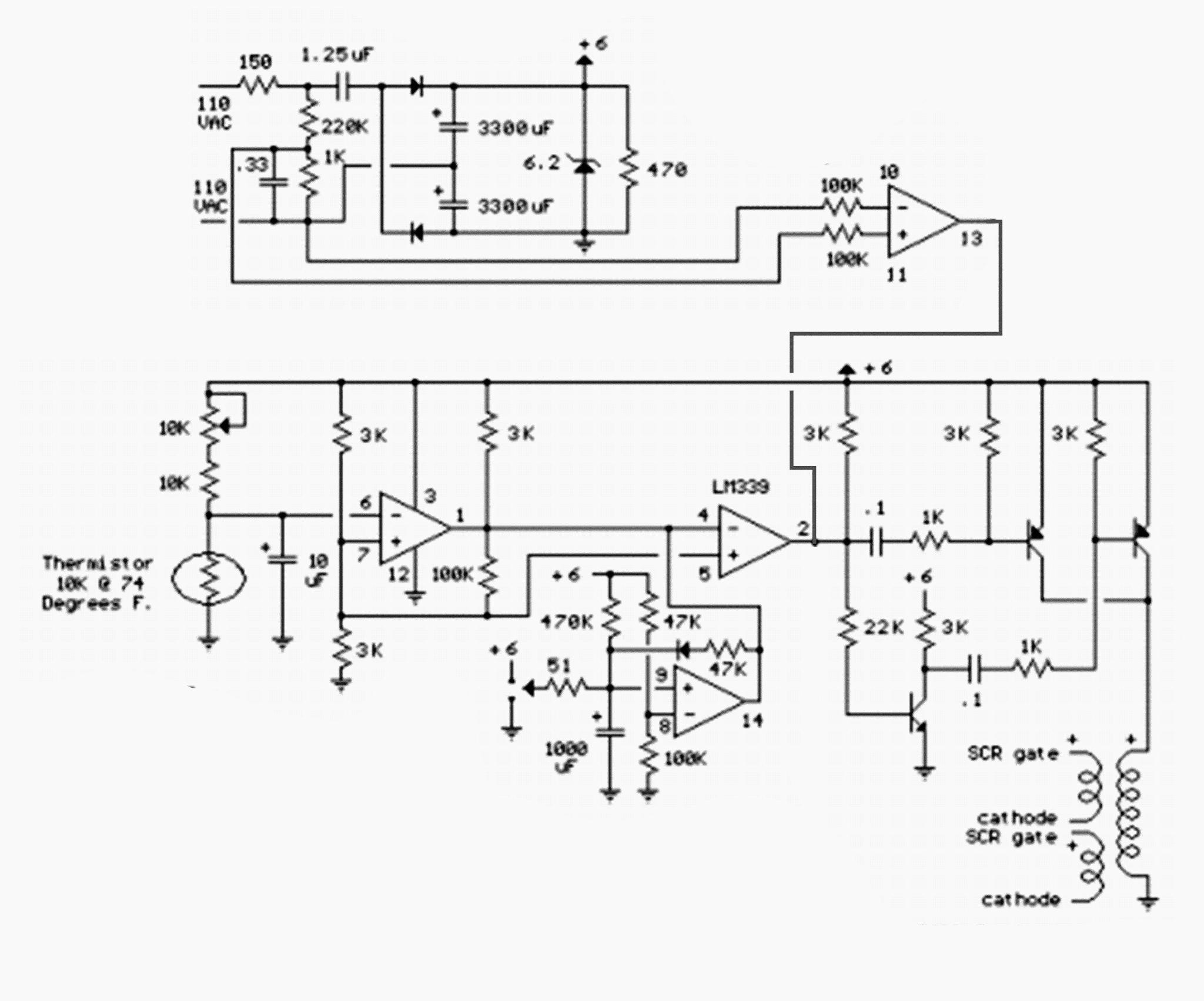The following is a SCR controlled room warmer circuit manufactured in 2001 which as of late got to be discontinuous so I chose to supplant it with the more straightforward strong state hand-off circuit above.
Likewise, SCRs are much less expensive than strong state transfers which keep running about $40 for the 25 amp units.
How it Works
The warmer component (not demonstrated) is joined in arrangement with two consecutive 16 amp SCRs (not indicated) which are controlled with a little heartbeat transformer.
The beat transformer has 3 indistinguishable windings, two of which are utilized to supply trigger heartbeats to the SCRs, and the third winding is joined with a PNP transistor combine that on the other hand supply heartbeats to the transformer toward the start of each air conditioner half cycle.
The trigger pulses are connected to both SCRs close to the start of each air conditioner half cycle yet one and only directs relying upon the air conditioner extremity.
DC power for the circuit is indicated in the lower left area of the drawing and uses a 1.25uF, 400 volt non-energized capacitor to acquire around 50mA of current from the air conditioner line.
The current is corrected by 2 diodes and used to charge a few bigger low voltage capacitors (3300uF) which give around 6 volts DC to the circuit. The DC voltage is directed by the 6.2 volt zener and the 150 ohm resistor in arrangement with as far as possible the surge current when force is initially connected.
The lower comparator (yield at pin# 13) serves as a zero intersection locator and produces a 60 Hz square wave in stage with the air conditioner line.
The stage is moved somewhat by the 0.33 uF, 220K and 1K system so that the SCR trigger heartbeat arrives when the line voltage is a couple of volts above or beneath zero.
The SCRs won't trigger at precisely zero since there will be no voltage to look after conduction.
A low level at pin# 2 is created when the temperature is over the coveted level and represses the square wave at pin#13 and counteracts activating of the SCRs.
At the point when the temperature drops beneath the fancied level, pin#2 will move to an open circuit condition permitting the square wave at pin# 13 to trigger the SCRs.
The comparator close to the focal point of the drawing (pin# 8,9,14) is utilized to permit the warmer to be physically keep running for a couple of minutes and naturally stop.
A flitting flip switch (demonstrated joined with a 51 ohm resistor) is utilized to release the 1000uF capacitor so that pin# 2 of the upper comparator moves to an open circuit state permitting the 60 Hz square wave to trigger the SCRs and force the warmer.
At the point when the capacitor comes to around 4 volts the circuit comes back to ordinary operation where the thermistor controls the operation. The transient switch can likewise be flipped so that the capacitor charges over 4 volts and stop the radiator if the temperature is over the setting of the pot.

Leave a Reply